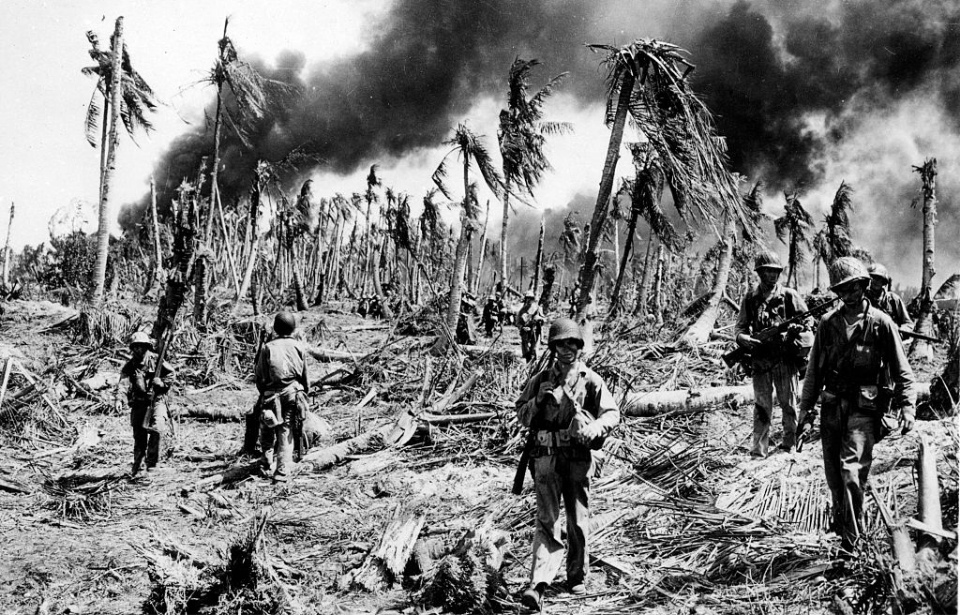The Kwajalein Atoll is a ring-shaped coral formation in the Republic of the Marshall Islands. The largest and southernmost island in the atoll is Kwajalein, home to Bucholz Army Airfield. It’s been in the possession of the United States since World War II, following a fierce battle with Japanese forces.
Japanese control of Kwajalein following World War I
Upon the outbreak of World War I, Japan joined forces with the Triple Entente, which included the United Kingdom, Russia and France. It seized the Marshall Islands with little resistance, and in 1922 was given control of the region under the League of Nations’ South Seas Mandate.
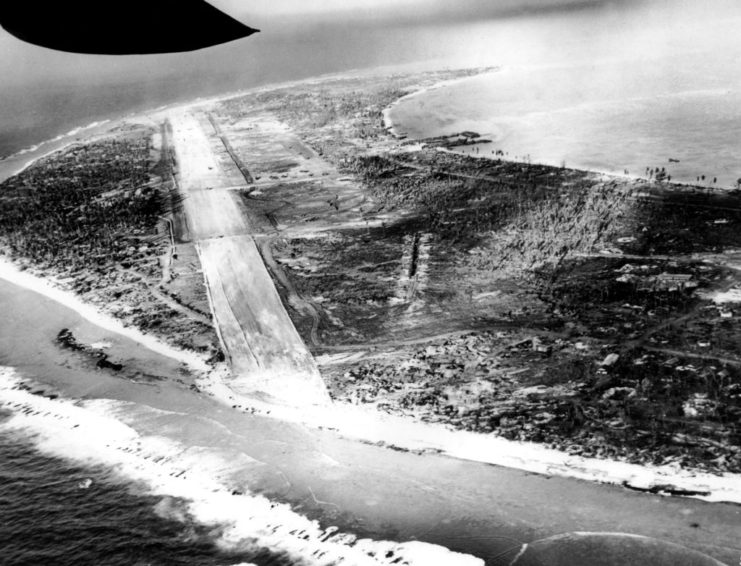
Prior to the start of the Pacific War, Kwajalein Atoll primarily saw Japanese settlement from traders and their families, who lived among island natives. Korean forced laborers were also sent to the Marshall Islands, following Japan’s colonialism efforts in Korea. It’s believed around 10,000 were sent to the islands prior to the war.
Japan bolsters its defenses after Pearl Harbor
Prior to the Japanese attack on Pearl Harbor on December 7, 1941, military defenses on Kwajalein were meager at best. Efforts were made to bolster them following a series of raids by the USS Enterprise (CV-6) on the airfield at Roi-Namur, north of Kwajalein, and merchant ships in Carlos Pass.
The Japanese had its forced laborers build new military facilities across the atoll. As the US continued its bombing of the region, these laborers were also tasked with repairing any damage. In early 1943, additional Japanese ground and naval forces were sent to Kwajalein from the Manchurian front. However, they were young and poorly trained, which, paired with attacks on supply ships, meant many perished from malnutrition and tropical illnesses.
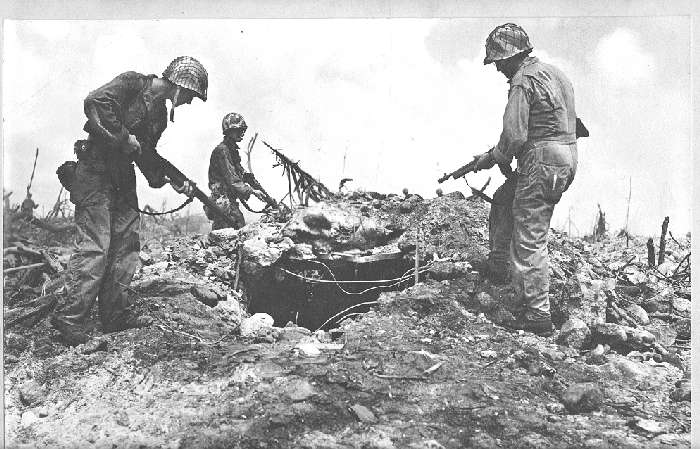
Kwajalein became known as “Execution Island,” due to the treatment of forced laborers and the killing of prisoners of war held at its POW camp. Many were not registered with the Red Cross and were forced to serve as test subjects for the Imperial Japanese Army’s use of biological warfare agents.
US success during the Battle of Kwajalein
In 1943, US Navy Admiral Chester Nimitz proposed the military change its approach in the Pacific Theater. The Japanese were continuing to score crucial victories, leading Nimitz to suggest the US launch a series of amphibious assaults on select Japanese-held islands – “island-hopping” – on their way toward the Philippines and, later, Japan itself.
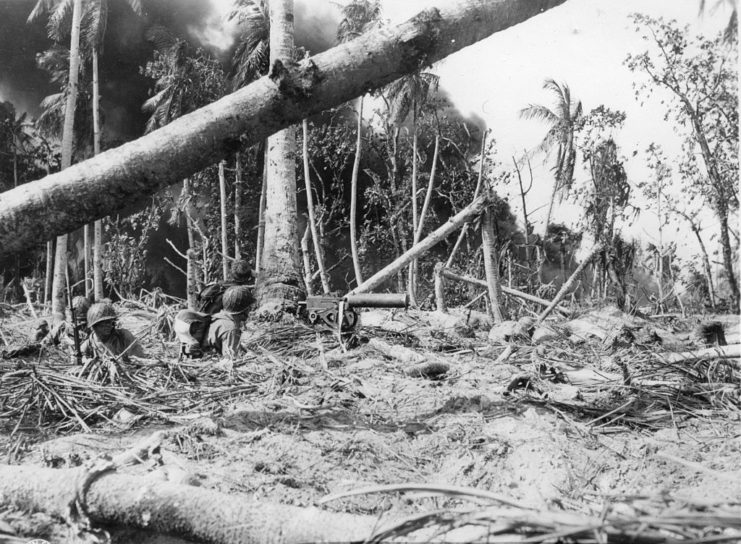
On January 31, 1944, using lessons learned during the deadly Battle of Tarawa in November 1943, the American forces launched an attack on Kwajalein Atoll, later known as the Battle of Kwajalein. The 7th Infantry Division, spearheaded by the 111th Infantry Regiment, led an amphibious assault on Kwajalein, while the 4th Marine Division did the same on Roi-Namur.
The next day, Kwajalein became the target of the most concentrated bombardment of the Pacific War, with an estimated 36,000 shells striking the island from naval ships and ground artillery. B-24 Liberators also conducted an aerial bombardment.
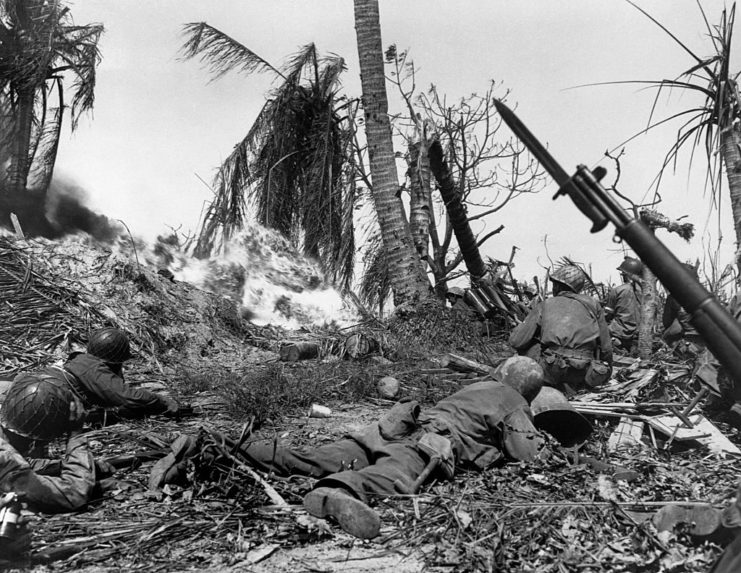
While the Marines were able to capture Roi during the first day of fighting and Namur by noon on the next, Kwajalein took longer to secure. It wasn’t until February 4 that US troops felt confident they had subdued the Japanese, and it took another two days for them to lay claim on Kwajalein, along with the rest of the Marshall Islands.
US occupation of Kwajalein following the battle
Following their victory over the Japanese, the US military turned Kwajalein into Bucholz Army Airfield and used it as a staging area for future operations. The atoll was in a strategic position, allowing bombers to attack enemy targets in the Marshall Islands, therefore isolating Japanese-held outposts that had been skipped over during the campaign.
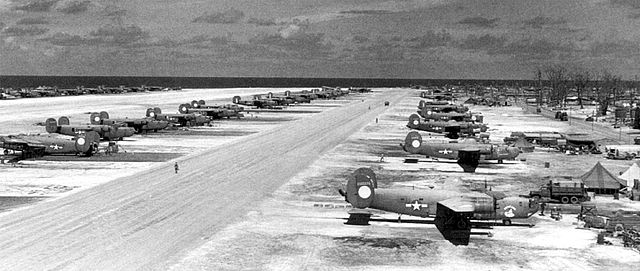
In April 1944, after making repairs to the airfield, the US Army Air Forces (USAAF) moved Headquarters, 7th Air Force to Kwajalein, along with the 11th and 30th bombardment groups and the 28th Photographic Reconnaissance Squadron. USAAF combat units remained on Kwajalein until 1944, after which they moved to the Marianas and were assigned to airfields on Saipan and Guam.
The island was then used as a maintenance and supply hub.
Use of Bucholz Army Airfield during the Cold War
Following WWII, Kwajalein was used as the main command center and preparation base for Operation Crossroads, a pair of nuclear weapon tests conducted at Bikini Atoll in 1946. The purpose was to better understand the effects of nuclear weapons on warships, and saw the sinking of both the USS Pennsylvania (BB-38) and the captured German heavy cruiser Prinz Eugen.
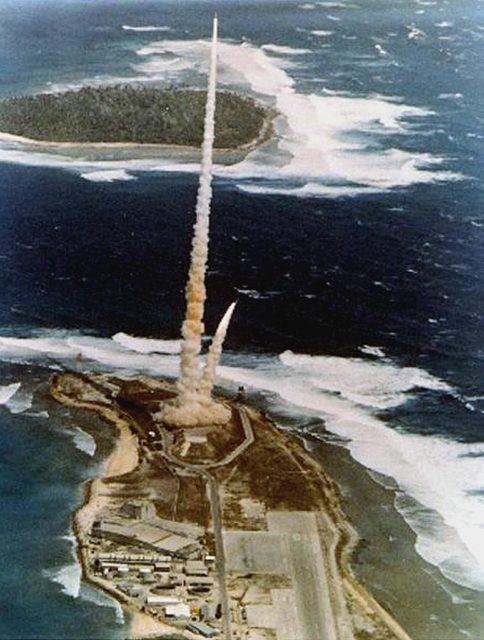
During the 1950s-60s, Bucholz Army Airfield became part of the Atomic Energy Commission Pacific Testing Area. The Army took it over as part of their Nike Zeus efforts – an anti-ballistic missile (ABM) system designed to destroy incoming intercontinental ballistic missile warheads from the Soviet Union.
In 1983, a Compact of Free Association was signed, giving the US full responsibility and authority over the defense of the Marshall Islands.
Kwajalein, today
Today, Kwajalein is part of the Ronald Reagan Ballistic Missile Defense Test Site. It features a host of tracking cameras, radar, support systems and missile launchers. It’s also one of five ground stations that control the operation of the GPS navigation system.
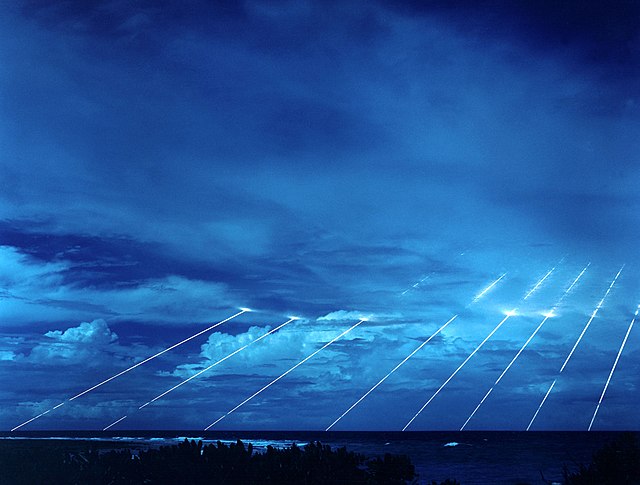
More from us: Radiation Levels Higher in the Marshall Islands Than in Chernobyl
As well, it’s considered an ideal location for refueling during trans-Pacific flights. While commercial aircraft stop on Kwajalein, all operations must be given 24 hours’ clearance beforehand, and passengers transiting through the island on the same airplane as military personnel are not allowed to deplane, for security reasons. Those who do are transported to and from the island of Ebeye, which is the civilian population center of Kwajalein Atoll.
